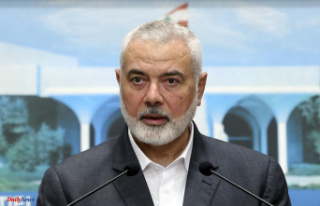In a groundbreaking move towards improving healthcare accessibility and patient outcomes, the United States National Health Care System is undergoing a transformative shift by incorporating Urgent Care services. This strategic integration aims to address long-standing issues within the healthcare system, providing timely and efficient medical attention to individuals across the nation.
I. Why the Need for Urgent Care in the US National Health Care System?
The inclusion of Urgent Care services in the US National Health Care System comes in response to the increasing demand for prompt medical attention outside traditional hospital settings. With emergency departments often burdened by non-emergency cases, Urgent Care facilities play a pivotal role in alleviating the strain on hospitals, ensuring that patients receive timely care for non-life-threatening conditions.
II. Breaking Down Barriers: Improving Accessibility for All Americans
One of the primary goals of integrating Urgent Care into the national healthcare framework is to enhance accessibility for all Americans. These facilities are strategically located in communities, offering a more convenient option for individuals who may face challenges in reaching a hospital. This move is set to bridge the gap in healthcare access, particularly in rural areas where the nearest hospital may be miles away.
III. The Role of Telemedicine in Urgent Care
With advancements in technology, the integration of telemedicine in Urgent Care services is revolutionizing the way healthcare is delivered. Patients can now consult with healthcare professionals remotely, receiving guidance on non-emergency medical issues without the need for physical presence. This innovative approach not only improves efficiency but also minimizes the strain on physical Urgent Care facilities.
IV. Streamlining Processes: Reducing Wait Times and Increasing Efficiency
Urgent Care facilities within the National Health Care System are designed to streamline processes, significantly reducing wait times compared to traditional emergency departments. This improvement in efficiency ensures that patients with non-emergency conditions are attended to promptly, allowing healthcare professionals in emergency departments to focus on critical cases.
V. Collaborative Care: Integrating Urgent Care with Primary Care Physicians
To ensure continuity of care, Urgent Care facilities are fostering collaboration with primary care physicians. This integration facilitates seamless sharing of patient information, enabling a more comprehensive approach to healthcare. Patients visiting Urgent Care can expect a smooth transition of information to their primary care providers, ensuring that their overall health is well-managed.
VI. The Economic Impact: A Win-Win for Patients and Healthcare Providers
The incorporation of Urgent Care services into the National Health Care System is not only beneficial for patients but also for healthcare providers and the economy. By diverting non-emergency cases from emergency departments, healthcare costs are optimized, and resources are allocated more efficiently. This results in a healthier population and a more sustainable healthcare system.
VII. Overcoming Challenges: Addressing Skepticism and Implementation Hurdles
While the integration of Urgent Care into the National Health Care System is a significant step forward, it is not without challenges. Skepticism among healthcare professionals and patients, coupled with logistical hurdles in implementation, requires careful navigation. However, proactive communication and education campaigns are being launched to address concerns and ensure a smooth transition.
The incorporation of Urgent Care services into the US National Health Care System marks a monumental shift towards a more accessible, efficient, and patient-centric healthcare model. By addressing the most searched questions surrounding this transformation, the nation is taking a bold step towards ensuring that every American has timely access to the healthcare they need. This strategic move is poised to redefine the landscape of healthcare delivery in the United States, setting a precedent for other nations to follow.












